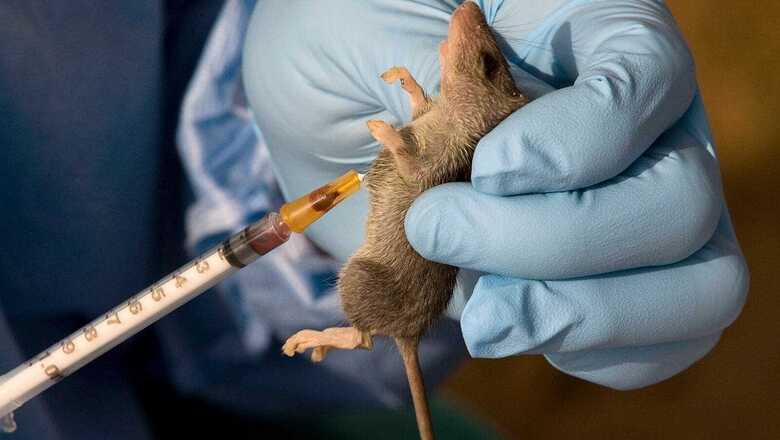Move Over Covid, First Death from Lassa Fever in UK Sparks Concern. Check Symptoms, Risk & Treatment

views
Even as the world battles the scourge of coronavirus, with the less severe Omicron variant leading to surge in infections in several countries, we may be looking at a new cause for concern as one person has died in Britain from Lassa fever, health authorities said, announcing the first three cases of the disease in the country since 2009. The patient died at a hospital in Bedfordshire, north of London. All three people infected were from the same family in eastern England and recently travelled to West Africa.
Lassa fever, an acute viral haemorrhagic illness, belongs to the same family as the Ebola and Marburg viruses but is much less deadly. It takes its name from the town of Lassa in northern Nigeria where it was first identified in 1969. The UK Health Security Agency (UKHSA), a public health body, said close contacts of the patients were being traced with a view to “appropriate assessment, support and advice”. “The risk to the general public remains very low,” it added.
The UKHSA has confirmed that two other people had been diagnosed with the disease. One of the confirmed cases recovered, while the second was receiving specialist treatment at the Royal Free London NHS Foundation Trust in the north of the British capital. The hospital has a secure unit which specialises in the treatment of viral haemorrhagic fevers.
The patient who died was initially being treated as a suspected case at the Bedfordshire Hospitals NHS Foundation Trust north of London. The hospital confirmed the patient had the disease in a statement. Last month, the Nigerian authorities said they were battling rising cases of the disease that claimed dozens of lives. Infection numbers typically climb at the start of the year in a phenomenon linked to the dry season.
News18 takes a look at the disease, symptoms, and treatment available:
What is Lassa fever?
According to the Centers for Disease Control and Pollution (CDC), the Lassa fever-causing virus is found in West Africa and was first discovered in 1969 in Lassa, Nigeria. The fever is spread by rats and is primarily found in countries in West Africa including Sierra Leone, Liberia, Guinea, and Nigeria where it is endemic.
A person can become infected if they come in contact with household items of food that is contaminated with the urine or feces of an infected rat. It can also be spread, though rarely, if a person comes in contact with a sick person’s infected bodily fluids or through mucous membranes such as the eyes, nose or the mouth. Person-to-person transmission is more common in healthcare settings.
On Monday, Nigerian media reported the latest outbreak in that country had claimed 48 lives already this year, with those in their 20s said to be the predominant age group affected.
What are the symptoms?
Mild symptoms include slight fever, fatigue, weakness and headache and more serious symptoms include bleeding, difficulty breathing, vomiting, facial swelling, pain in the chest, back, and abdomen and shock. Symptoms typically appear 1-3 weeks after exposure.
According to the CDC, the most common complication associated with the fever is deafness. In many such cases, the hearing loss can be permanent.
How deadly is it?
While severe illness can occur, most people make a complete recovery. The WHO pegs the overall mortality rate at 1% but the observed rate among patients admitted to hospital with severe cases is 15%.
What is the risk?
The UKHSA said the risk to the public “remains very low”. In a statement, it added: “We are contacting the individuals who have had close contact with the cases prior to confirmation of their infection, to provide appropriate assessment, support and advice.”
How can you prevent catching the infection?
The best way to avoid getting infected is to avoid contact with rats. This means avoiding contact with rats not only in places where the disease is endemic, but also maintaining hygiene in other areas to prevent rats from entering the house, keeping food in rat-proof containers and laying down rat traps, the CDC advises.
Read all the Latest India News here




















Comments
0 comment